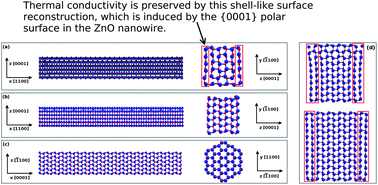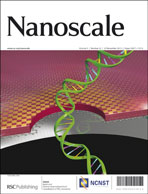Polar surface effects on the thermal conductivity of ZnO nanowires: a shell-like surface reconstruction-induced preserving mechanism
Abstract
We perform molecular dynamics (MD) simulations to investigate the effect of polar surfaces on the thermal transport in zinc oxide (ZnO) nanowires. We find that the thermal conductivity of nanowires with free polar (0001) surfaces is much higher than that of nanowires that have been stabilized with reduced charges on the polar (0001) surfaces, and also hexagonal nanowires without any transverse polar surface, where the reduced charge model has been proposed as a promising stabilization mechanism for the (0001) polar surfaces of ZnO nanowires. From normal mode analysis, we show that the higher thermal conductivity is due to the shell-like reconstruction that occurs for the free polar surfaces. This shell-like reconstruction suppresses twisting motion in the nanowires such that the bending phonon modes are not scattered by the other phonon modes, and this leads to substantially higher thermal conductivity of the ZnO nanowires with free polar surfaces. Furthermore, the auto-correlation function of the normal mode coordinate is utilized to extract the phonon lifetime, which leads to a concise explanation for the higher thermal conductivity of ZnO nanowires with free polar surfaces. Our work demonstrates that ZnO nanowires without polar surfaces, which exhibit low thermal conductivity, are more promising candidates for thermoelectric applications than nanowires with polar surfaces (and also high thermal conductivity).


 Please wait while we load your content...
Please wait while we load your content...